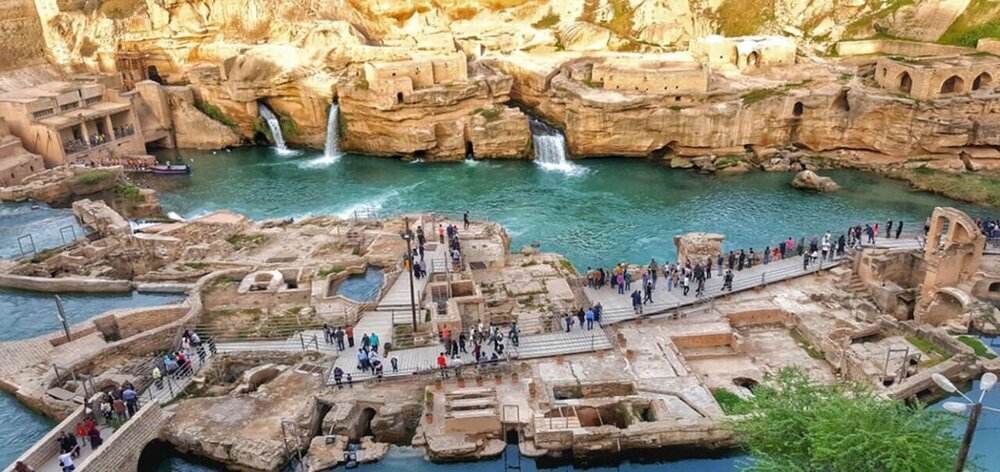Shushtar Historical Hydraulic System not in good condition, devotee of cultural heritage says

TEHRAN – A cultural heritage enthusiast has warned about what he called an unstable situation of the Shushtar Historical Hydraulic System, saying its eastern wall is “not in a good condition”.
“A devotee of cultural heritage has warned about the unstable situation of the western wall,” Mehr reported on Sunday.
Speaking to ISNA, Ahmad Shamsabadi said the eastern part of the ancient site may be demolished at any moment.
“Eastern wall of the Shushtar Historical Hydraulic System may be destroyed at any moment, and this problem cannot be concealed,” he said.
Elsewhere in his remarks, Shamsabadi criticized relevant officials in charge of protecting cultural heritage, saying the continuation of these indifferences on the issue may result in its destruction.
Also, Shamsabadi reminded people about issues with the western wall of the magnificent site. “Probable landslide in the western wall of the site cannot be solved by reducing the weight of overlooking houses. Moreover, it is a time-consuming project.”
In addition, Shamsabadi said any action on the site should be based on careful and thorough studies.
“It requires a national determination as such a World Heritage site belongs to the entire humans and we are responsible for this heritage to pass on to the next generation,” he concluded.
Last November, the UNESCO-registered site closed its doors amid safety concerns after its western side was announced to be “unstable”.
The ancient hydraulic system comprises bridges, weirs, tunnels, canals, and a series of ancient watermills powered by human-made waterfalls. It is named after an ancient city of the same name with its history dating back to the time of Darius the Great, the Achaemenid king.
The property is as rich in its diversity of civil engineering structures and constructions as in the diversity of its uses (urban water supply, mills, irrigation, river transport, and defensive system). The Shushtar Historical Hydraulic System testifies to the heritage and the synthesis of earlier Elamite and Mesopotamian know-how; it was probably influenced by the Petra dam and tunnel and by Roman civil engineering.
“The hydraulic system has been considered a Wonder of the World not only by the Persians but also by the Arab-Muslims at the peak of their civilization,” according to the UN cultural body.
Furthermore, one of its main canals is a veritable artificial watercourse that made possible the construction of a new town and the irrigation of a vast plain, at the time semi-desert.
UNESCO says that the Shushtar Historical Hydraulic System demonstrates outstanding universal value as in its present form, it dates from the 3rd century CE, probably on older bases from the 5th century BC. It is complete, with numerous functions, and large-scale, making it exceptional.
Outstanding Universal Value
The Shushtar Historical Hydraulic System is complete, with numerous functions, and large-scale, making it exceptional. Moreover, it is a homogeneous hydraulic system that is rich in its diversity of civil engineering structures and its constructions as in the diversity of its uses (urban water supply, mills, irrigation, river transport, and defensive system).
According to the UN cultural body, the Shushtar Historical Hydraulic System testifies to the heritage and the synthesis of earlier Elamite and Mesopotamian knowhow; it was probably influenced by the Petra dam and tunnel and by Roman civil engineering.
It is considered by some as a Wonder of the World not only by the Persians but also by the Arab-Muslims at the peak of their civilization. The Gargar canal is a veritable artificial watercourse that made possible the construction of a new town and the irrigation of a vast plain, at the time semi-desert. The site sits in an urban and rural landscape specific to the expression of its value.
AM
